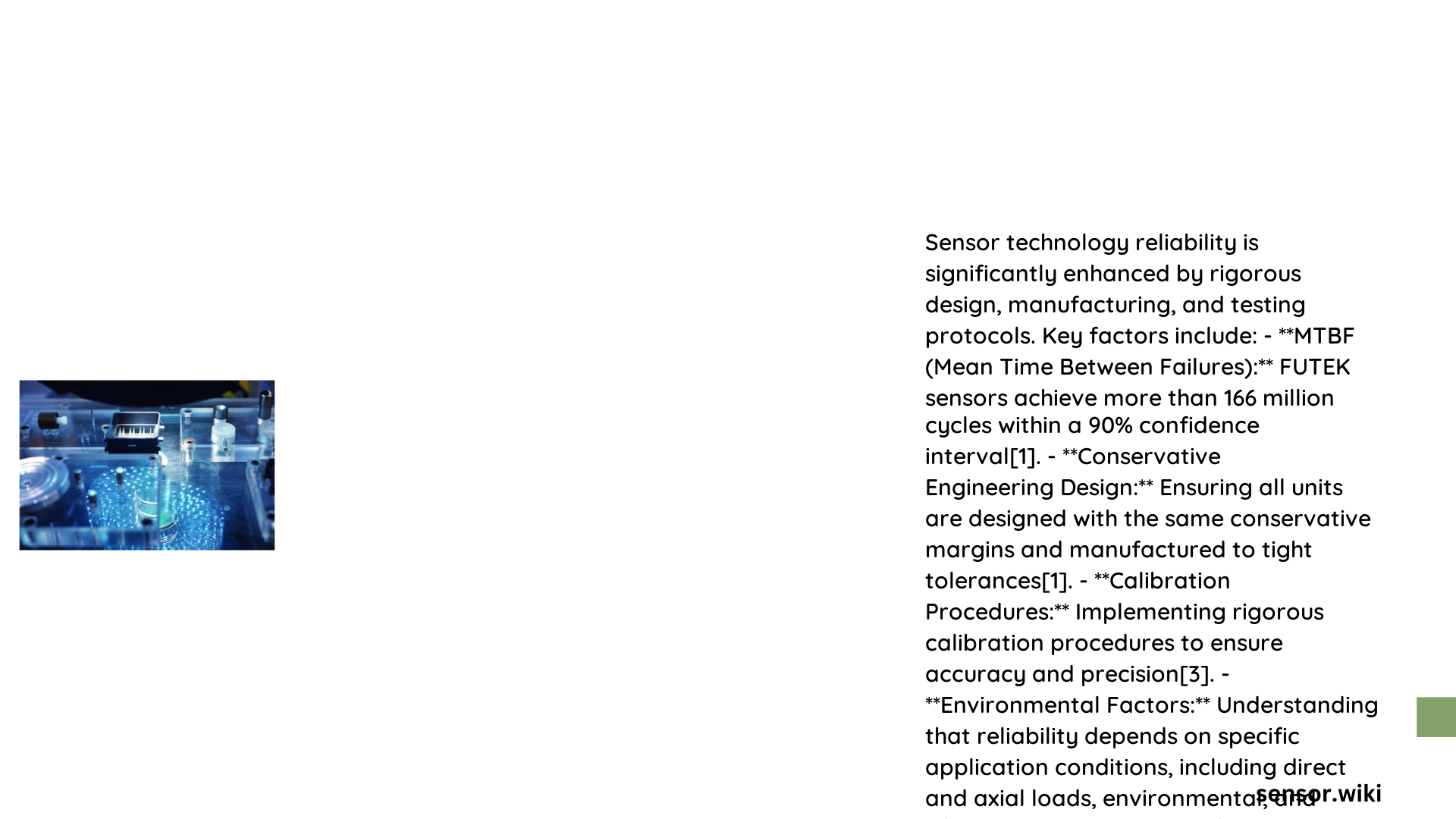Sensor technology reliability is a critical aspect of modern technological systems, encompassing complex interactions between environmental conditions, sensor design, and long-term performance. Understanding the nuanced factors that influence sensor reliability can help engineers, researchers, and industries make informed decisions about sensor selection, maintenance, and deployment strategies.
What Determines Sensor Technology Reliability?
How Do Environmental Factors Impact Sensor Performance?
Environmental conditions play a pivotal role in sensor technology reliability. Different sensors exhibit varying levels of resilience to temperature, humidity, and chemical exposures:
Temperature Sensitivity
- PurpleAir Sensors:
- 2% permanent degradation in hot and humid climates
-
Performance decline accelerates after 3.5 years of operation
-
enDAQ Sensors:
- Operational range: -10°C to 80°C
- Battery life reduction:
- Below -10°C: 50% reduction
- Above 45°C: 75% reduction
Humidity Impact
- High humidity environments cause faster sensor degradation
- Recommended relative humidity: 0-95% (non-condensing)
What Are the Key Failure Rates Across Different Sensors?
| Sensor Type | Field Failure Rate | Operational Conditions | Calibration Accuracy |
|---|---|---|---|
| PurpleAir | 2% permanent degradation | Hot/humid zones | -0.12 μg/m³ annual bias |
| enDAQ | <3% field failure | -10°C to 80°C | Requires regular calibration |
| Monnit | Varies by environment | 50°F to 122°F | Dependent on protective measures |
How Can Sensor Reliability Be Enhanced?
Strategies to improve sensor technology reliability include:
- Proper Calibration
- Regular accuracy checks
- Compare against reference measurements
-
Maintain manufacturer-recommended calibration intervals
-
Environmental Protection
- Use NEMA-rated enclosures
- Implement protective shielding
-
Monitor and control exposure conditions
-
Advanced Monitoring Techniques
- Utilize environmental profile tools
- Track sensor performance metrics
- Implement predictive maintenance protocols
What Are the Cost Implications of Sensor Reliability?
Sensor reliability directly impacts overall system performance and maintenance expenses:
- Initial Investment: Higher-quality sensors with robust reliability features
- Maintenance Costs: Regular calibration and environmental management
- Replacement Frequency: Depends on sensor type and operating conditions
What Technical Considerations Affect Sensor Performance?
Critical technical factors include:
- Sensor material composition
- Signal-to-noise ratio
- Response time
- Measurement range accuracy
- Power management efficiency
Conclusion

Sensor technology reliability is a multifaceted challenge requiring comprehensive understanding of environmental, technical, and operational parameters. By implementing strategic monitoring, protection, and maintenance approaches, organizations can significantly enhance sensor performance and longevity.
Practical Recommendations
- Conduct regular performance audits
- Invest in high-quality sensors
- Develop robust environmental management protocols
- Train personnel in proper sensor handling and maintenance
References:
1. Analysis of Degradation in Low-Cost Particulate Matter Sensors
2. Environmental Impact on Failure Rates
3. Environmental Factors Affecting Sensors
